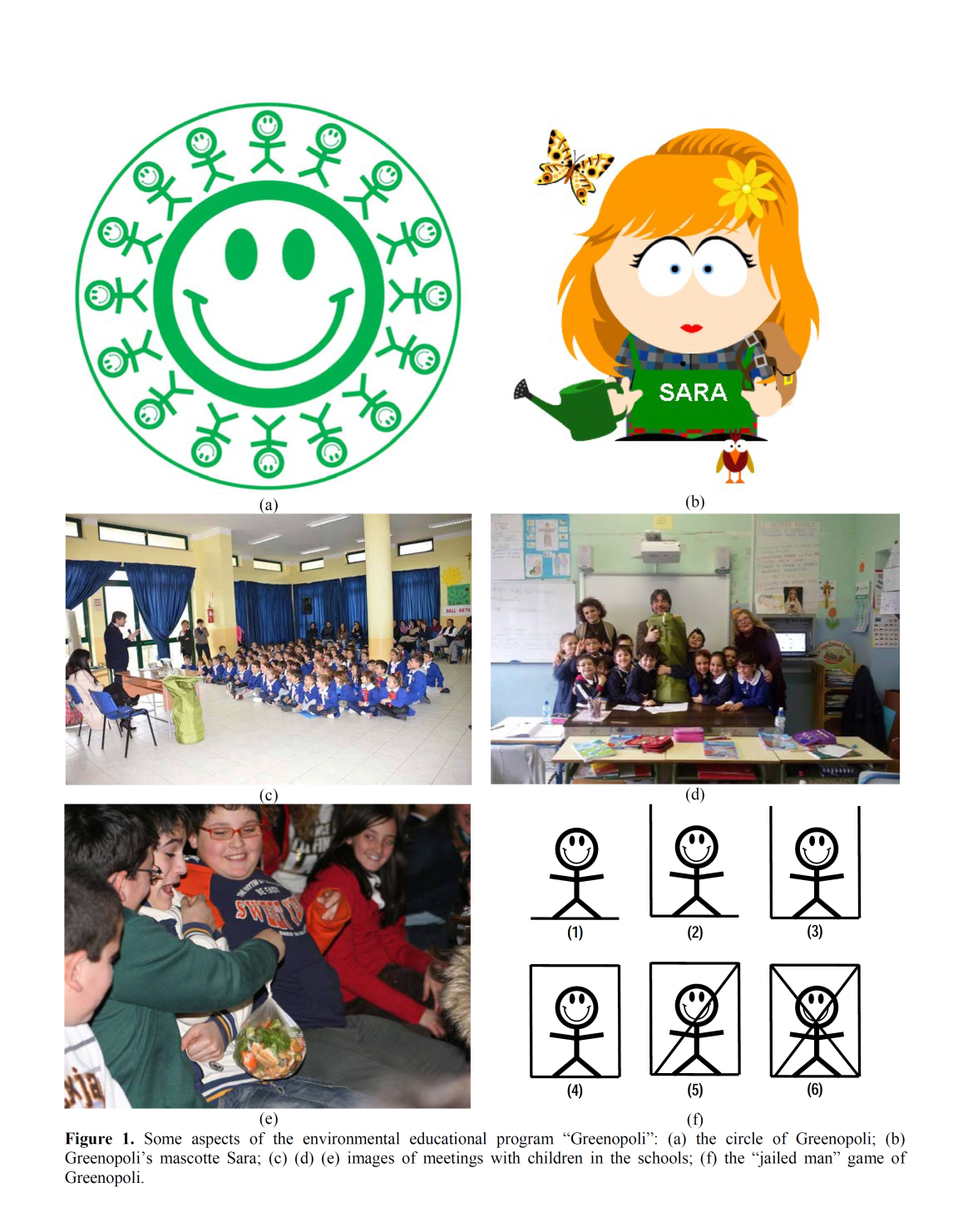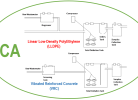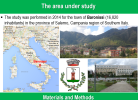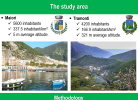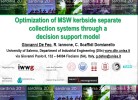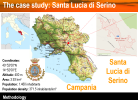Greenopoli is a website (www.greenopoli.it), a Facebook page, and idea, a teaching method, a game. Two are its main key words: sharing and sustainability.
Sustainability (“Sostenibilità” in Italian), Environment (“Ambiente” in Italian), Waste (“Rifiuti” in Italian) and Water (“Acqua” in Italian) are some of the main topics of the environmental educational program “Greenopoli”. Sara”, one of the protagonists of Greenopoli, is the Italian acronym made with the initials of the four main topics (De Feo, 2014).
Sustainability is linked to the future and, thus, with children, who love games, ideas, asking questions endlessly, learning, laughing, joking, etc.
The environment is everything around us: we necessarily have to take care of it if we want to survive on the planet Earth!
We have to change the way that we usually use to look at those that we still continue to call “waste”: they are materials at one end of their life cycle and that can assume a new shape in a life cycle thinking perspective.
Water is the blue gold of the third millennium. It is a limited resource, similarly to all the other Earth’s resources. Therefore, water has to be preserved in order to be saved for our children and for the children of our children, and so on.
In the Greenopoli’s world, together with Sara, there are other funny characters such as Mr. Error, inspector Garbage and Mr. Rubbish, etc. All these characters, together with new green fairy tales and games are the main tools used during the environmental education meetings managed by Greenopoli for adults and children (see Figure 1).
In terms of waste, Greenopoli proposes a new classification of waste, taking into account the life cycle thinking approach and the concept of usefulness as previously described in De Feo and Napoli (2005). The basic idea is that those we call “waste” are mainly materials that have momentarily “exhausted” their function becoming a sort of “exhausted materials”. In the light of this consideration, on the base of their origin, we could have: Normal Exhausted Materials (NEM), corresponding to the Municipal Solid Waste (MSW), and Special Exhausted Materials (SEM), mainly corresponding to the industrial, agricultural, demolition and construction waste, etc. Definitively, taking into account the concept of hazard, there will be four kind of exhausted materials: Non Hazardous NEM, Hazardous NEM, Non Hazardous SEM, Hazardous SEM (De Feo, 2008).
Bibliographic references
De Feo G., Napoli R.M.A. (2005). New and old paradigms on the production and management of municipal solid waste, Sardinia Symposium 2005, Sardinia, Italy.
De Feo G. (2008). Fenomeni di Inquinamento e Controllo della Qualità Ambientale (Pollution phenomena and control of the environmental quality), Editor Aracne, Rome, Italy, ISBN 9788854817128 (In Italian).
De Feo G. (2014). Il Metodo Greenopoli (The method Greenopoli), Editor Il Papavero, Manocalzati (Av), Italy, ISBN 9788898987139 (In Italian).


